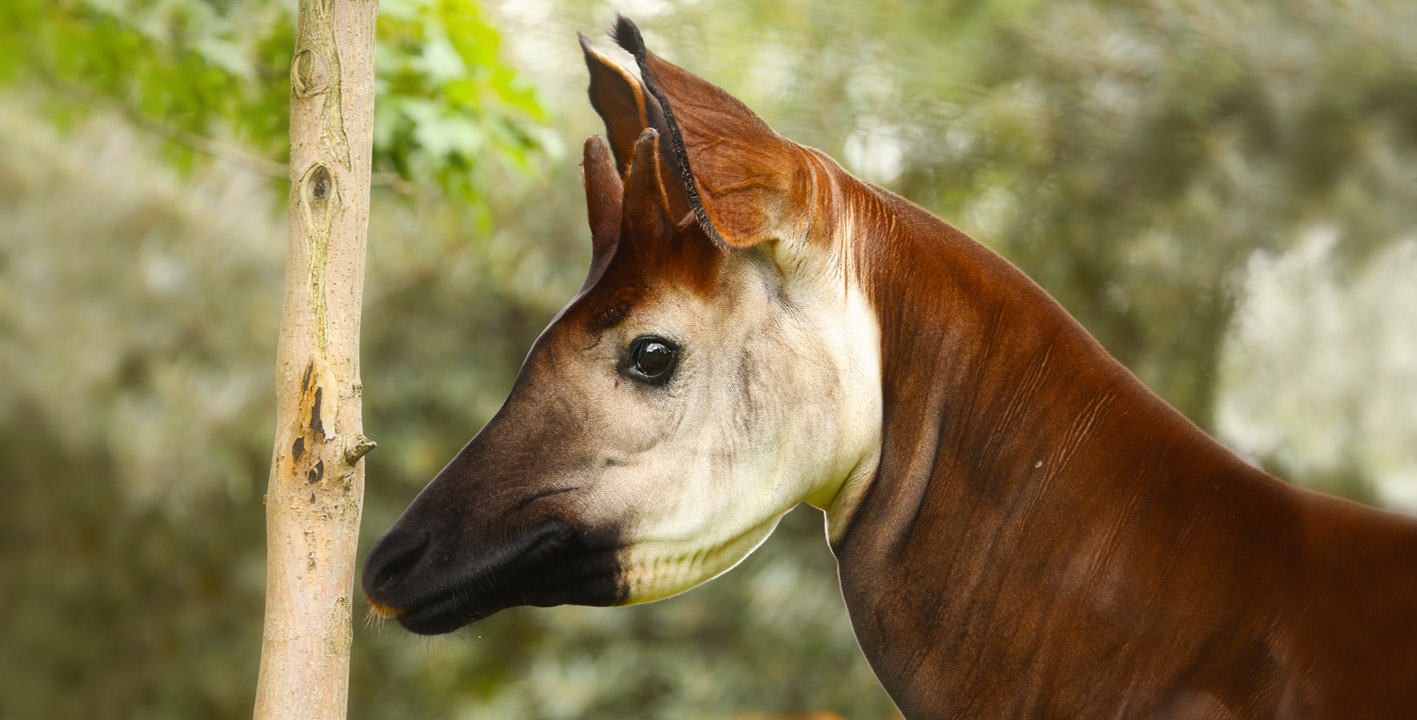Giraffids were once a diverse group spread throughout Eurasia and Africa.
The earliest known giraffid fossil remains have been dated at 15-20 million years.
An intermediate form known as Palaeotragus has been dated to approximately 10-12 million years.
The skeleton of Palaeotragus is very similar to that of the modern okapi, which has led to the okapi being referred to as a ‘living fossil’ (Wilson and Mittermeier, 2011).
Now, only two species remain – the giraffe and the okapi. A number of features are shared between both including: Long dark coloured tongues, lobed canine teeth, and skin covered horns called ‘ossicones’. Both giraffe and okapi simultaneously step with the front and hind leg on the same side of the body rather than moving alternate legs on either side like other ungulates (Dagg, 1960).


Similarities between giraffe and okapi include skin-covered horn-type protusions called ossicones
Sources
- Skinner JD and Mitchell G. Family Giraffidae (Giraffe and Okapi). pp788-802 in Wilson DE and Mittermeier RA. 2011. Handbook of the Mammals of the World, Volume 2: Hoofed Mammals. Lynx Edicons
- Dagg AI. 1960. Gaits of the giraffe and okapi. Journal of Mammalogy 41:282
The giraffe and the okapi are both ruminants belonging to the Giraffidae family.
| Giraffe | Okapi | |
|---|---|---|
| Class | Mammalia | Mammalia |
| Order | Artiodactyla | Artiodactyla |
| Family | Giraffidae | Giraffidae |
| Genus | Giraffa | Okapia |
Both the Okapia and Giraffa genera are represented by only one species each, but while Okapia johnstoni has no subspecies, Giraffa camelopardalis has nine currently recognised subspecies (although research is ongoing): Giraffa camelopardalis angolensis, G. c. antiquorum, G. c. camelopardalis, G. c. giraffa, G. c. peralta, G. c. reticulata, G. c. rothschildi, G. c. thornicrofti and G. c. tippelskirchi.



